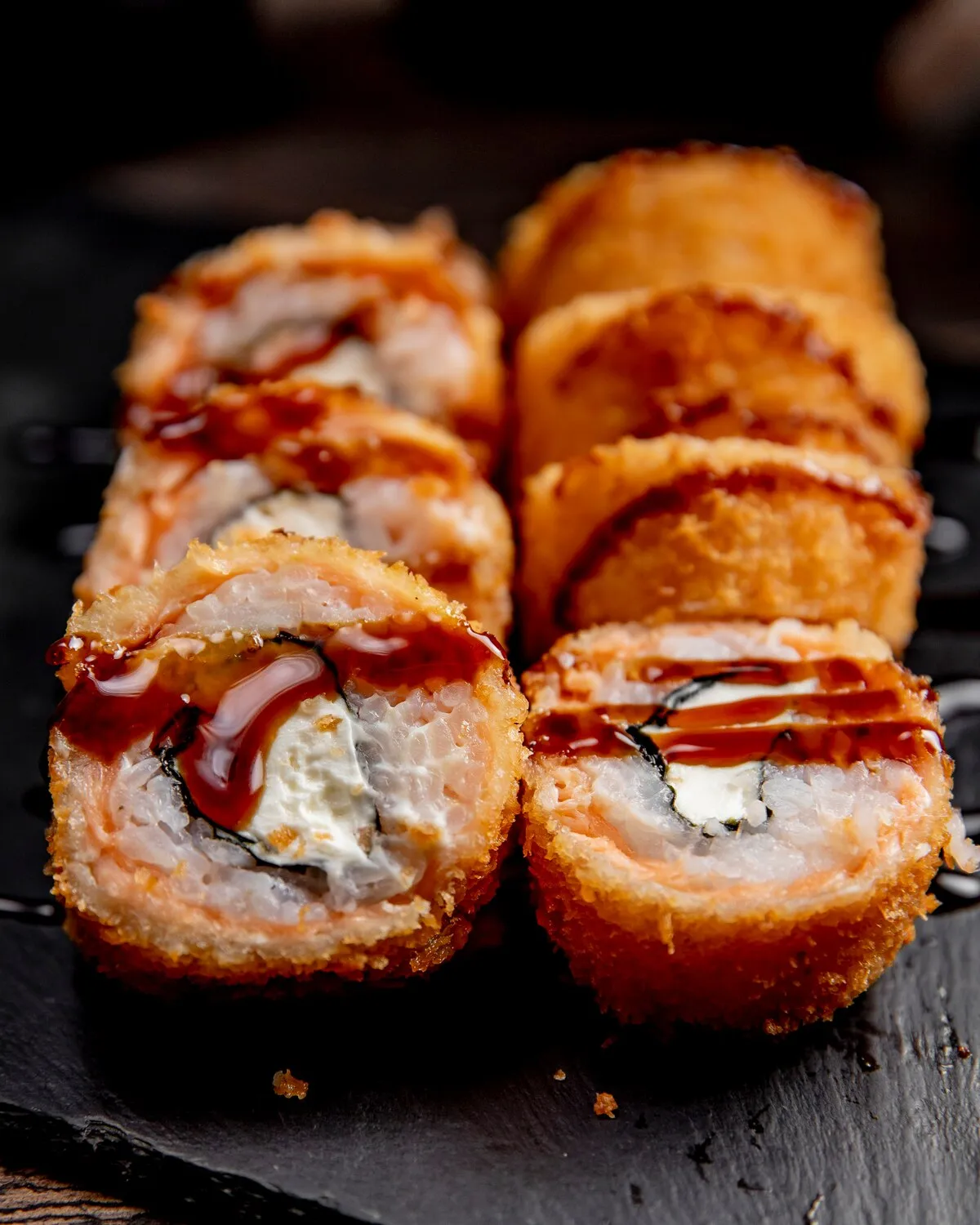
Hot Roll
Fried sushi rolls with various fillings.
Nutrition Facts
* The % Daily Value (DV) tells you how much a nutrient in a serving of food contributes to a daily diet. 2,000 calories a day is used for general nutrition advice.
Lives Sushi Lounge
Hot rolls, also known as fried sushi rolls, are a modern adaptation of traditional sushi that emerged in the United States. They represent a fusion of Japanese culinary techniques with Western preferences for cooked and often more flavorful dishes. The exact origins are debated, but they gained popularity as a way to introduce sushi to a wider audience who may have been hesitant to try raw fish.
Hot rolls reflect a broader trend of fusion cuisine in American dining, showcasing the adaptability of Japanese culinary traditions to Western palates. They are often seen as a more accessible entry point to the world of sushi.
Americanized Sushi
Hot rolls represent a significant departure from traditional Japanese sushi, appealing to American preferences for cooked ingredients and bolder flavors. They are often found in American sushi restaurants and are a popular choice for those new to sushi.
Fusion Cuisine
Hot rolls exemplify the concept of fusion cuisine, blending Japanese techniques with Western ingredients and flavor profiles. This adaptability has contributed to the widespread popularity of sushi in the United States.
Hot rolls offer a delightful blend of textures and flavors, contrasting the creamy filling with the crispy exterior. Common flavor profiles include savory, umami, and sometimes spicy or sweet notes, depending on the filling and sauces used.
The flavor profile is determined by the ingredients within the roll and the sauces drizzled on top. Commonly found ingredients include cooked seafood like shrimp tempura or cooked crab, avocado, cream cheese, and vegetables. Sauces such as eel sauce (unagi sauce), spicy mayonnaise, or sriracha add complexity and enhance the overall taste. The frying process imparts a satisfying crunch and a warm, comforting element.
Temperature Control
Maintain a consistent oil temperature for even frying. Too low, and the roll will be soggy; too high, and it will burn before the inside is heated through.
Rice Preparation
Use properly seasoned sushi rice. The rice should be sticky enough to hold its shape but not overly mushy. Allow the rice to cool slightly before rolling.
Rolling Technique
Roll the sushi tightly and evenly to prevent it from falling apart during frying. Use a bamboo rolling mat (makisu) for optimal results.
Drying
Make sure to pat down the roll with a paper towel to remove the excess moisture from the outside. This will allow the roll to be crispy when fried
Explore additional Sushi dishes and restaurants
Explore SushiDiscover top dining spots and culinary experiences in Guarapuava.
Explore GuarapuavaLearn more about the food culture, restaurant scene, and culinary heritage of Brazil.
Explore Brazil